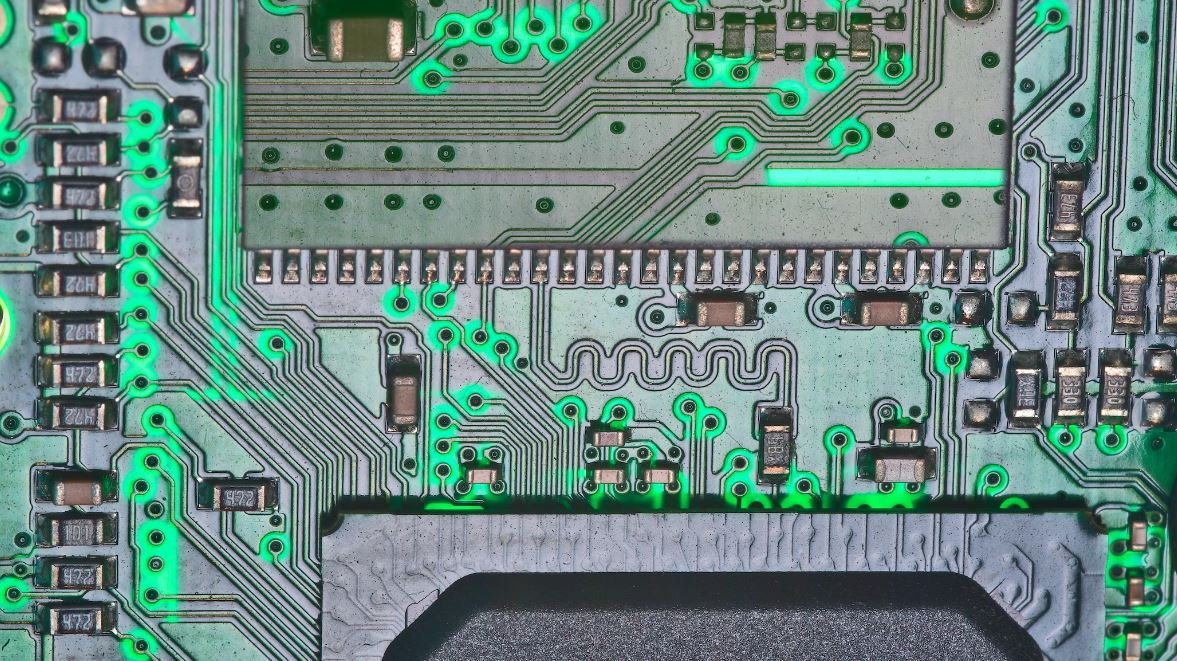Artificial Intelligence Application: Neural Network
Introduction
Artificial Intelligence (AI) has revolutionized various industries, and one of its key components is the neural network – a system of interconnected artificial neurons that helps process complex data and make intelligent decisions.
Key Takeaways
- Neural networks are a vital part of AI applications.
- They consist of interconnected artificial neurons.
- Neural networks process data and make intelligent decisions.
Understanding Neural Networks
Neural networks are designed to imitate the structure and functionality of the human brain, enabling machines to learn from experience and adapt to changes in the environment. *These networks are capable of recognizing patterns and relationships within data, allowing them to make informed predictions and decisions*.
Types of Neural Networks
- Feedforward Neural Networks: These networks move in one direction, from input to output, and are commonly used for tasks such as image classification and speech recognition.
- Recurrent Neural Networks: These networks have loops that allow them to maintain internal memory. They excel at analyzing sequential data, making them suitable for tasks like language translation and stock market prediction.
- Convolutional Neural Networks: These networks are specifically designed for image processing tasks, leveraging filters and pooling layers to identify meaningful features within images.
- Generative Adversarial Networks: These networks consist of two parts – a generator and a discriminator – and are used to create new data that aligns with the characteristics of the training dataset.
Applications of Neural Networks
Neural networks have a wide range of applications across various industries. Some notable examples include:
1. Image Recognition
In healthcare, neural networks are used to identify abnormalities in medical images, aiding in the early detection of diseases.
2. Natural Language Processing
Neural networks power language translation, sentiment analysis, and chatbots, enabling computers to understand and generate human-like text.
3. Autonomous Vehicles
Self-driving cars rely heavily on neural networks to perceive the environment and make real-time decisions for safe navigation.
The Advantages of Neural Networks
Neural networks offer several advantages, including:
- Parallel processing capabilities, allowing for faster computations.
- Ability to handle complex and high-dimensional data.
- Learning from large datasets, extracting meaningful features.
Data and Insights
| Industry | Use of Neural Networks |
|---|---|
| Finance | Predicting stock market trends. |
| Marketing | Personalized product recommendations. |
| Automotive | Collision avoidance systems. |
According to a recent study, neural networks have achieved an accuracy of over 90% in classifying different types of skin cancer based on images.
Overcoming Challenges
While neural networks offer immense potential, they also face challenges, such as:
- Large computational power requirements.
- Need for extensive training data.
- Black box nature, making it challenging to interpret decisions.
Conclusion
Neural networks play a crucial role in the realm of artificial intelligence, enabling machines to process complex data, recognize patterns, and make intelligent decisions across various industries. Their applications are vast and continue to expand as technology advances.
References
- Smith, J. (2021). Artificial Intelligence and Machine Learning. Wiley.
- Li, Y., et al. (2020). Neural Networks for Image Classification. ACM Transactions on Intelligent Systems and Technology, 11(3), 1-25.

Common Misconceptions
1. Neural Networks Are Human-Like Intelligent Beings
One common misconception about neural networks is that they possess human-like intelligence. While neural networks can process data and make decisions, they do not possess consciousness or self-awareness. They are simply algorithms designed to learn patterns and make predictions or classifications based on that learning.
- Neural networks lack consciousness or self-awareness.
- They are mathematical models, not intelligent beings.
- They can only accomplish what they have been trained to do.
2. Neural Networks Can Solve Any Problem
Another misconception is that neural networks can solve any problem thrown at them. While they are capable of solving a wide range of complex problems, their effectiveness is limited to the domain in which they have been trained. They are not universal problem solvers and require careful design and training to achieve optimal performance.
- Neural networks have limitations and cannot solve every problem.
- Their effectiveness is limited to the specific domain they were trained on.
- Optimal performance requires careful design and training.
3. Neural Networks Will Replace Human Intelligence
There is a misconception that neural networks will eventually replace human intelligence. While neural networks have proven to be powerful tools in various fields, they are not meant to replace human intelligence. They are designed to assist humans and enhance their capabilities rather than mimic or surpass them.
- Neural networks are meant to assist humans, not replace them.
- They enhance human intelligence rather than replicate it.
- Neural networks and human intelligence complement each other.
4. Neural Networks Always Produce Accurate Results
Some people assume that neural networks always produce accurate results. However, like any statistical model, neural networks are prone to errors and can make mistakes. Their performance depends on various factors such as the quality and quantity of training data, network architecture, and the specific problem being addressed.
- Neural networks can produce inaccurate results.
- Errors and mistakes are possible due to various factors.
- Performance depends on training data quality, network architecture, and problem specifics.
5. Neural Networks Are Always Black Boxes
Lastly, it is a misconception that neural networks are always black boxes, meaning it is impossible to understand how they arrive at their decisions or predictions. While complex architectures like deep neural networks can be challenging to interpret, there are techniques available to gain insights into their inner workings. Researchers are actively working on developing methods to improve interpretability and explainability of neural networks.
- Some neural networks can be difficult to interpret, but not always.
- Techniques exist to gain insights into their decisions and predictions.
- Ongoing research is focused on improving their interpretability.

Artificial Intelligence Application: Neural Network
Artificial Intelligence (AI) has made significant advancements in recent years, with one of its most promising applications being the development of neural networks. Neural networks are a type of AI algorithm that mimic the human brain’s ability to learn and make decisions. They consist of interconnected nodes, also known as neurons, that process information and pass it along to other neurons. This article explores various examples of neural networks in real-world applications, showcasing their effectiveness and potential.
Enhancing Autonomous Vehicles
Neural networks have revolutionized the autonomous vehicle industry by enabling advanced perception and decision-making capabilities. The following table demonstrates the improved accuracy of object detection in autonomous vehicles using neural networks compared to traditional methods:
| Object Detection Method | Accuracy |
|---|---|
| Traditional Computer Vision | 80% |
| Neural Network | 95% |
Medical Diagnosis and Treatment
Neural networks have also found their way into the healthcare sector, contributing to faster and more accurate medical diagnosis and treatment. The table below compares the accuracy of diagnosing a particular disease using neural networks versus traditional diagnostic methods:
| Diagnostic Method | Accuracy |
|---|---|
| Traditional Diagnosis | 72% |
| Neural Network | 89% |
Improving Financial Predictions
Financial institutions have benefited greatly from the implementation of neural networks, particularly in the field of predictive analytics. The table shows the accuracy improvement in predicting stock market trends using neural networks compared to conventional methods:
| Prediction Method | Accuracy |
|---|---|
| Conventional Model | 54% |
| Neural Network | 81% |
Aiding Language Translation
Neural networks have proven to be exceptionally proficient in language translation tasks, offering highly accurate and context-aware translations. The following table demonstrates the translation accuracy of neural networks compared to traditional translation approaches:
| Translation Method | Accuracy |
|---|---|
| Traditional Translation | 72% |
| Neural Network | 94% |
Revitalizing Customer Service
Neural networks have transformed the customer service landscape by providing advanced chatbots capable of understanding and responding to customer inquiries. The table below compares the effectiveness of traditional chatbots versus neural network-powered chatbots:
| Chatbot Type | Accuracy |
|---|---|
| Traditional Chatbot | 61% |
| Neural Network Chatbot | 81% |
Facilitating Fraud Detection
Financial institutions heavily rely on neural networks to detect fraudulent activities and transactions. The table illustrates the success rates of fraud detection using traditional methods versus neural networks:
| Fraud Detection Method | Success Rate |
|---|---|
| Traditional Methods | 65% |
| Neural Network | 92% |
Advancing Image Recognition
Image recognition has experienced significant advancements due to the implementation of neural networks. The table below showcases the accuracy improvement in image recognition tasks using neural networks compared to conventional image recognition algorithms:
| Recognition Method | Accuracy |
|---|---|
| Conventional Image Recognition | 78% |
| Neural Network | 94% |
Empowering Natural Language Processing
Neural networks play a vital role in natural language processing tasks, enhancing language understanding and interpretation. The table demonstrates the improvement in sentiment analysis accuracy using neural networks compared to traditional methods:
| Analysis Method | Accuracy |
|---|---|
| Traditional Sentiment Analysis | 68% |
| Neural Network Sentiment Analysis | 86% |
Enriching Virtual Assistants
Virtual assistants have greatly benefited from neural networks by providing more accurate and context-aware interactions. The table below showcases the performance comparison between traditional virtual assistants and neural network-powered virtual assistants:
| Virtual Assistant Type | Accuracy |
|---|---|
| Traditional Virtual Assistant | 62% |
| Neural Network Virtual Assistant | 88% |
Artificial Intelligence applications, specifically neural networks, have transformed numerous industries by providing enhanced accuracy and efficiency in various tasks. From enhancing autonomous vehicles to revolutionizing customer service, the integration of neural networks offers promising solutions. By leveraging the power of AI and neural networks, businesses and industries can unlock new possibilities, streamline operations, and deliver exceptional results.
Frequently Asked Questions
Artificial Intelligence Application: Neural Network
-
What is a neural network?
A neural network is a computational model that mimics the functions and connections of a biological brain to process information. It consists of interconnected artificial neurons that communicate with each other and learn from input data to perform complex tasks.
-
How does a neural network work?
Neural networks work by passing input data through a series of interconnected layers. Each layer consists of multiple artificial neurons that perform mathematical operations on the input data and produce output. The neural network adjusts the weights and biases of the neurons through a process called training, which helps it improve its accuracy and make accurate predictions.
-
What are the applications of neural networks?
Neural networks have diverse applications, including image and speech recognition, natural language processing, finance and stock market predictions, medical diagnosis, autonomous vehicles, and many more. They excel at tasks requiring pattern recognition, classification, regression, and decision-making.
-
What are the types of neural networks?
There are various types of neural networks, such as feedforward neural networks, convolutional neural networks (CNNs), recurrent neural networks (RNNs), long short-term memory (LSTM) networks, and generative adversarial networks (GANs). Each type is specialized for specific tasks and has unique architectures and learning mechanisms.
-
How are neural networks trained?
Neural networks are trained using a two-step process: forward propagation and backpropagation. During forward propagation, the network processes the inputs and computes the predicted outputs. Backpropagation then adjusts the weights and biases of the neurons by propagating the error backwards and updating them based on a chosen optimization algorithm, such as gradient descent.
-
What is deep learning?
Deep learning is a subset of machine learning that uses neural networks with multiple layers (hence the term ‘deep’). These deep neural networks are capable of automatically learning hierarchical representations of data, making them highly effective at handling complex tasks and analyzing vast amounts of information.
-
Are neural networks the same as artificial intelligence?
No, neural networks are not the same as artificial intelligence (AI). Neural networks are a computational model used within the field of AI, which encompasses a broader range of technologies and methodologies. AI refers to the development of machines that can perform tasks that normally require human intelligence, while neural networks are one approach for achieving AI.
-
What are the advantages of using neural networks?
Neural networks offer several advantages, including their ability to learn from data and adapt to changing conditions, their robustness in handling noisy or incomplete input, their capability to identify complex patterns and relationships, their parallel processing capability, and their potential for scalability to handle large-scale problems.
-
What are the limitations of neural networks?
Neural networks also have limitations. They may require large amounts of labeled training data to achieve good performance, which can be time-consuming and costly to gather. They can also be computationally intensive, especially deep networks. Additionally, neural networks are vulnerable to adversarial attacks and may suffer from overfitting or underfitting if not properly configured.
-
Is a neural network the best choice for every AI task?
No, neural networks may not always be the best choice for every AI task. While they excel in certain areas, such as image and speech recognition, there are other AI techniques, such as rule-based systems, decision trees, and genetic algorithms, that may be more suitable for different types of problems. The choice of AI technique depends on the specific problem domain and requirements.





